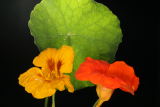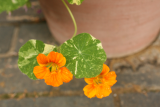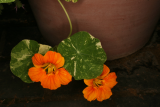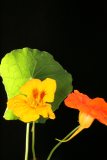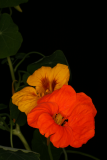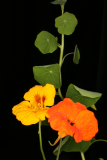Additional notes (click to expand)
Tropaeolum majus L. Alaska Series
Family: TROPAEOLEACEAEGenus: Tropaeolum
Species: majus L.
Cultivar: Alaska Series
Distribution summary: probable origin South America
Habit: Annual
Hardiness: H2 - Tender; cool or frost-free greenhouse
Garden status: Not currently grown
Flowering months: June, July, August, September
Reason for growing: Medicinal, other use
